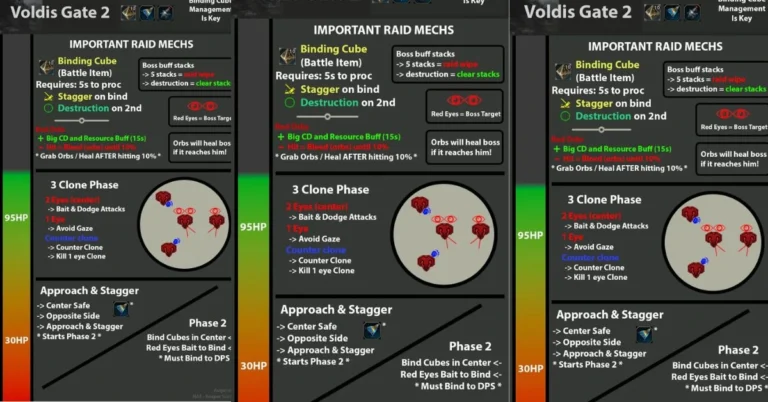Understanding “Unknown St_Fence_History”: Resolving Device Status Issues in Network Performance Monitoring
In the realm of network performance monitoring (NPM), maintaining the health and stability of network devices is crucial for seamless operations. One common, yet sometimes perplexing, status issue faced by network administrators is the “Unknown St_Fence_History.” This status can appear when a network device fails to report its operational condition accurately to the monitoring system. Left unresolved, unknown statuses can have cascading effects, disrupting network stability and hindering overall performance.
In this article, we’ll thoroughly explore the concept of “Unknown St_Fence_History,” why it occurs, and how to address it effectively. With this knowledge, network administrators can better manage device statuses, minimize network disruptions, and optimize their NPM strategy. We’ll also discuss key terms like NPM, polling, and connectivity, as well as advanced troubleshooting techniques to ensure a resilient network environment.
What is “Unknown St_Fence_History”?
The term “Unknown St_Fence_History” refers to a device status in network performance monitoring tools that indicates a device’s operational condition cannot be determined. This can be due to a variety of reasons, ranging from network communication failures to device-specific issues.
In NPM, devices are continuously polled, meaning they’re frequently checked for updates on their status and performance. When a device returns an “unknown” response, it signifies that the monitoring system was unable to confirm if the device is operational, potentially due to insufficient data, a failed connection, or an internal error.
Importance of Understanding “Unknown St_Fence_History”
Encountering the “Unknown St_Fence_History” status can be more than a minor inconvenience; it may indicate underlying network issues that require immediate attention. By understanding this status, network administrators can:
- Identify and address communication breakdowns between devices and NPM systems.
- Prevent prolonged downtimes that could impact network reliability and performance.
- Enhance network reporting accuracy, ensuring all device statuses reflect the actual network condition.
- Improve overall network health by troubleshooting and mitigating the root causes of unknown statuses.
Addressing unknown statuses promptly is critical to keeping networks functional and secure.
Why Devices Show “Unknown” Status in Network Performance Monitoring
Devices may show an “unknown” status for several reasons, ranging from configuration issues to physical connectivity problems. Here are some common causes:
- Network Communication Failure: Poor or disrupted communication can prevent devices from responding to NPM requests. This could be due to faulty cables, broken connections, or firewall restrictions.
- Polling Configuration Errors: Polling settings control how frequently devices report their status. If these intervals are set improperly, NPM may fail to gather sufficient data, leading to an “unknown” status.
- Device Downtime or Power Failure: A device that is offline or has lost power may not respond to NPM requests, resulting in an “unknown” status.
- Outdated Firmware: Devices with outdated firmware might not support the latest NPM protocols or have compatibility issues, causing communication breakdowns.
- Security Restrictions: Firewalls or security settings can block NPM requests, making it impossible for the system to determine the device’s status.
How Devices Are Polled in Network Performance Monitoring
Polling is a fundamental process in NPM, used to check device status and performance regularly. Here’s how the polling process typically works:
- Request for Data: The NPM tool sends a data request to the device.
- Device Response: The device, if operational, returns data detailing its current status and performance.
- Status Update: The NPM system analyzes the response and updates the device status accordingly. Possible statuses include “Up,” “Down,” or “Unknown.”
If the device doesn’t respond, the NPM tool flags it with an “unknown” status, prompting administrators to investigate further.
Understanding “St_Fence_History” in NPM
“St_Fence_History” is a tracking component within NPM that logs device statuses over time. By recording changes in device status—such as from “Up” to “Down” or “Unknown”—this feature provides valuable historical insights into device behavior.
Why “St_Fence_History” Matters:
- Historical Analysis: Tracking status changes helps administrators identify patterns and anticipate future issues.
- Pattern Recognition: Analyzing the “Unknown” status patterns in specific devices can help diagnose recurring problems.
- Troubleshooting Efficiency: The history log aids in quicker, targeted troubleshooting when unknown statuses appear, saving time and reducing downtime.
Common Issues Leading to “Unknown St_Fence_History”
Certain technical issues often contribute to the appearance of “Unknown St_Fence_History.” Below are some frequent culprits and how they can be addressed:
- Device Firmware Problems: Ensuring devices are updated with the latest firmware helps prevent communication issues.
- Configuration Errors: Misconfigurations in either the NPM tool or the device can obstruct polling. Regularly reviewing and adjusting settings can reduce the likelihood of errors.
- Network Congestion: High traffic can delay polling responses, so maintaining optimal bandwidth is essential.
- Security Restrictions: Configuring firewall and security policies to allow NPM communication can resolve many unknown status issues.
By proactively managing these aspects, network administrators can reduce the frequency of unknown statuses.
Steps to Resolve “Unknown St_Fence_History” Status
If a device or interface in your network displays an “unknown” status, follow these steps to resolve it:
- Check Device Connectivity: Verify that the device is powered on and connected properly to the network.
- Review Polling Settings: Adjust polling intervals and confirm compatibility with the device.
- Update Firmware: Outdated firmware can cause communication issues, so update regularly.
- Adjust Security Settings: Modify firewall rules or security policies that might be blocking NPM requests.
- Reboot Devices: A reboot can refresh the connection and often resolves unknown statuses.
Best Practices for Network Performance Management
To avoid recurring unknown statuses and improve overall network performance, consider these best practices:
- Regular Firmware Updates: Keeping device firmware updated ensures compatibility with NPM tools.
- Routine Polling Adjustments: Regularly review polling intervals to match network performance needs.
- Consistent Network Monitoring: Proactive monitoring helps detect and address issues early, preventing unknown statuses.
- Proactive Troubleshooting: Resolve unknown statuses as they appear to avoid network disruptions.
- Comprehensive Logging: Log all device status changes and analyze them to spot patterns and recurring issues.
Implementing these practices can greatly reduce the frequency of unknown statuses, ensuring a stable and resilient network.
Advanced Troubleshooting for “Unknown St_Fence_History”
For persistent unknown statuses, advanced troubleshooting might be necessary. Here are some methods:
- Diagnostic Tools: Use built-in diagnostics to generate reports on communication failures and device status.
- SNMP Settings: Ensure Simple Network Management Protocol (SNMP) is configured correctly, as many NPM systems rely on it for polling.
- Network Path Analysis: Check for network path disruptions between NPM and devices.
- Packet Capture: Capture network packets to confirm whether polling requests are successfully sent and received.
Advanced troubleshooting can help pinpoint deeper issues and provide lasting solutions to unknown status problems.
Conclusion
Understanding and addressing “Unknown St_Fence_History” is vital for maintaining a healthy network environment. By identifying common causes—such as communication issues, misconfigurations, and outdated firmware—network administrators can implement effective strategies to prevent unknown statuses and improve overall network performance.
Following the best practices and troubleshooting methods outlined in this guide, administrators can minimize the impact of unknown statuses, ensuring consistent network availability and accurate monitoring. With proactive network performance management, “Unknown St_Fence_History” becomes a manageable issue rather than a disruptive problem, enabling smoother operations and greater network resilience in the long run.
FAQs
What is “Unknown St_Fence_History” in NPM?
It indicates a device status where the system cannot determine the device’s operational state due to communication issues.
Why do devices show an “unknown” status in NPM?
This can happen due to network issues, device power failures, or security settings blocking communication.
How can I resolve an “unknown” device status?
Check connectivity, update firmware, adjust polling settings, and review firewall policies.
What role does “St_Fence_History” play in NPM?
It logs status changes, helping administrators track and troubleshoot device issues.
Can frequent unknown statuses affect network performance?
Yes, unresolved unknown statuses can lead to inaccurate monitoring and impact network reliability.







